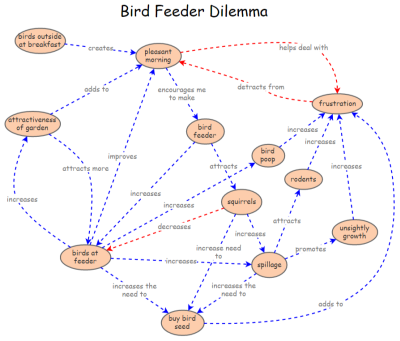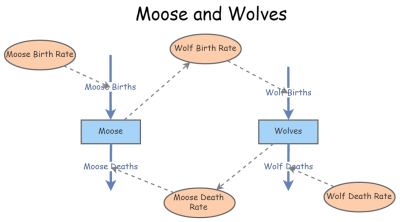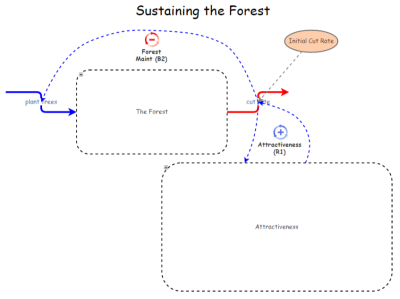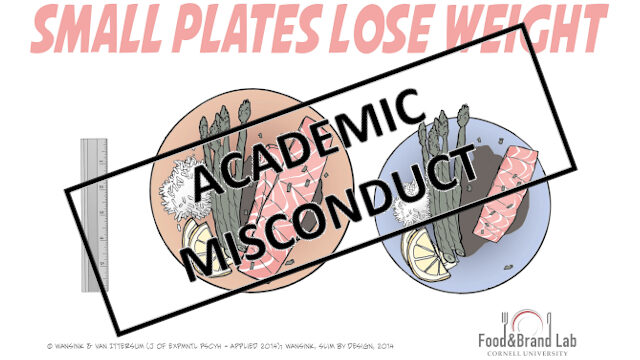
Web of wonder: Experiencing the web [Systems thinking & modelling series]
This is part 1 of a series of articles featuring the book Beyond Connecting the Dots, Modeling for Meaningful Results.
“Would you tell me, please, which way I ought to go from here?”
“That depends a good deal on where you want to get to,” said the Cat.
“I don’t much care where–” said Alice.
“Then it doesn’t matter which way you go,” said the Cat.
“–so long as I get SOMEWHERE,” Alice added as an explanation.
“Oh, you’re sure to do that,” said the Cat, “if you only walk long enough.”Lewis Carroll – Alice in Wonderland
We live in a world much like a giant spider web, where everything is connected to everything else. When something changes in one part of the web it ripples though the entire web. We tend to live in the moment, not realizing how our actions ripple over time through distant parts of the web. When we don’t understand the web, things around us seem extremely complicated, confusing, and overwhelming. We feel caught in the web. What we need is a web of understanding for this web of extended interactions.
It has been said that you can learn about riding a bicycle from reading a book, though to learn to ride a bicycle you actually have to spend time on a bicycle. The interactive learning environments (ILE) you’re about to experience are intended to develop a web of understanding for the web of extended interactions around you. You are encouraged to engage with these ILEs. The understanding you develop will help you determine where you want to get to and develop skills to improve your chances of getting there. These ILEs are very much like reading a book about riding a bicycle as you’re actually on the bicycle learning to ride it. Enjoy the experience and the learning.
Experiencing the web
Because everything is related to everything else in the web of extended interactions, seldom is it possible for an action to have only one effect. Please click on the “Bird Feeder Dilemma” and step through the ILE. This will give you an initial sense of how a simple action can impact many things, creating a web of extended interactions.
All you wanted was a more pleasant morning at breakfast.
Need help? See the Model instructions
Do you get a sense of the troubles you can get into when you think about a single action taken to achieve a goal without considering the effects of that action? This web of relations provides a limited view, as it’s only a picture of relations, and probably not all of the possible relations.
The picture doesn’t give you any real sense of the quantity of anything over time and there are times when a picture simply can not provide the level of understanding about a situation needed. The “Moose and Wolves” ILE should provide a sense of why it’s important to understand how the web of extended interactions develops over time if we are to really develop a web of understanding.
How do the populations of moose and wolves interact?
Need help? See the Model instructions
Was the interaction of the population of moose and wolves what you expected? Probably not. It’s the nature of a web of interactions over time that we simply can’t see by looking at a picture. The behavior over time is often critical for an understanding of what’s really happening in the web.
Consider the following “Sustaining the Forest” ILE intended to provide another example of how unexpected the behavior of a web of extended interactions can be.
Is the forest you care about sustainable under current practices?
Need help? See the Model instructions
Did you find it interesting how unexpected the future can be? Did you sense there was a good reason for things unfolding in the manner they did? As you continue you will develop your skills for understanding interactions in the web.
Next edition: Web of wonder: Creating the future.
Article sources: Beyond Connecting the Dots, Insight Maker. Reproduced by permission.
Header image source: Beyond Connecting the Dots.







